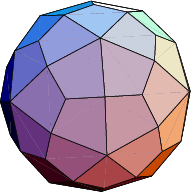Nature is the Grand Master of design. Nature’s masons provide insight, inspiration, economy of design, appropriate use of materials and an array of different solutions for dwelling structures. Evolution’s solutions to appropriate homes for various living organisms showcase various masonry techniques.
Foraminifera (forams and radiolaria) are tiny single-celled organisms of ancient origin found in the oceans, exemplars of shell design. Designs vary radically within foraminifera, from smooth spherical globules to spiky stellated stars; all forming calcareous hard shells. It is amazing that a single-celled organism is capable of such exquisite design.
As foraminifera die and their shells sink and accumulate on the ocean floor over geologic time, this material forms sedimentary rock, including limestone, marble, and other sedimentary and metamorphic calcareous rocks. Limestone is an ancient graveyard for countless of nature’s single-celled masons over the ages. Foraminifera is life as a geological force.
One good example of nature's masons is Astrammina Triangularis, shown below. This organism builds its shell out of small grains (masonry units) and assembles them in a triangular-based polyhedral arrangement.
Coral is another example of nature’s masons. Coral provides individual homes for countless individual polyps. Coral builds on its own ruins of dead polyps, forming entire monolithic reefs of fabulous single-celled condominium units. Coral is also a geological life form.
Sea urchins are a particularly interesting example of nature’s masonry. These organisms have tough protective spines, made of calcite crystals embedded in an amorphous mixture of lime and protein, exactly like bricks in mortar. The result is a hardened toughened structure, as I discussed in an earlier entry. An assembly of small hard, crystalline individual masonry units creates a toughened, pre-fractured structure. If this structure were one big crystal it would crack easily. Nature has provided an elegant solution using masonry techniques. Industry has taken note, and cement manufacturers are investigating and characterizing the structure of sea urchin spines for possible use in high performance concretes (HPC’s).
Turtles and Tortoises both employ a masonry design which creates an ideal portable dome home. The carapace (top side) and plastron (underside) are two shell segments comprised of polygons. Various species use patterns of polygons which create polyhedra which assemble into a dome. Tortoises -living on dry land- have a more fully round, dome-like carapace. Turtles -living in water- have a more streamlined carapace. The shell of a tortoise or turtle is typically made of 60 bones connected together in a masonry-like arrangement. The shell actually contains nerve endings, and is a real living part of the turtle. It is interesting to note that the regular polyhedra known as Trapezoidal Hexecontahedra is also composed of 60 polygons, the "turtle of polyhedra".












No comments:
Post a Comment